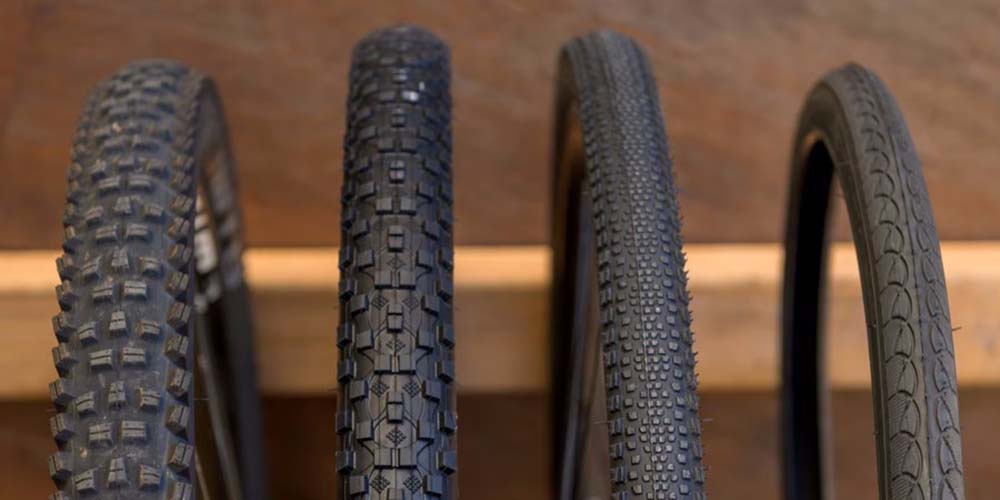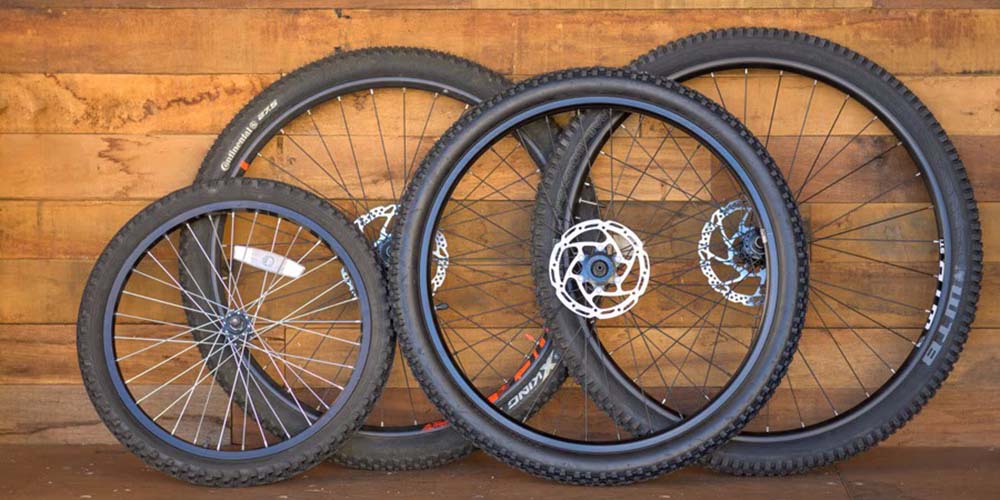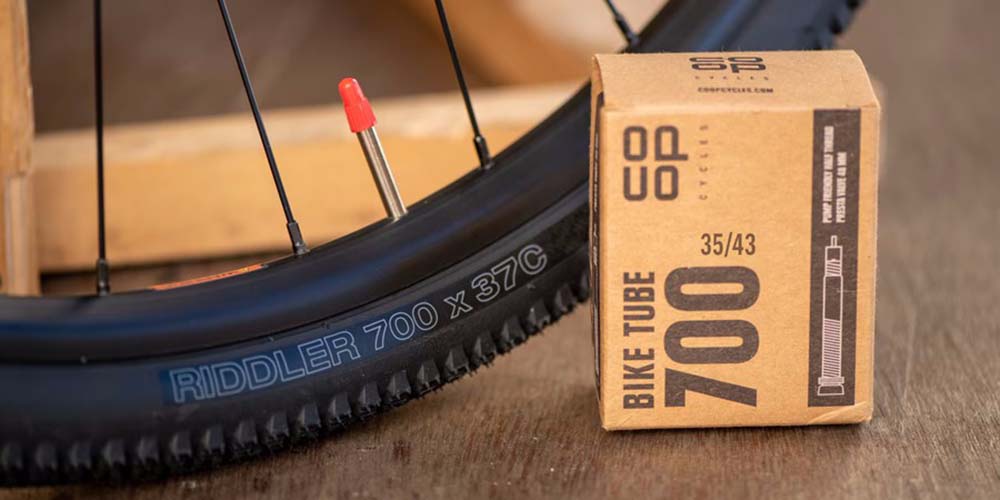How to choose bike tyres
Just as you would replace your old running shoes when they wear out, you need to do the same with your bike tyres when they wear out. Just as you can choose new shoes, so can new tyres. You want to make sure they fit well, but you may want to upgrade for better speed, durability, or just all-around performance.
This article will help you understand when it’s time to replace your tyres, how to know what size bike tyres to buy and some key features to consider when looking for replacement tyres.
The following are signs that it’s time for a new bike tyre:
Your tread edges are visibly worn and there are a lot of flats
Your bike’s handling is noticeably worse
Your tyre tread looks rounded or uneven
You notice a threaded pattern on the sidewall of the tyre (subject label)
The rubber starts to crack or flake off from the knobs or sidewalls
You notice deformation of the tyre (caused by damage to the casing underneath the outer wall)
You notice that the knife groove pattern (small slits that help the tyre grip on wet roads) is disappearing from the tyre
You notice that many of the small cuts can (or do) contain glass shards that can enter the tyre and cause a blowout
Your wear indicators (usually one or two small dents) are disappearing (not all tyres have wear indicators)
 How to get the right size bike tyre
How to get the right size bike tyre
Tyre sizing can be complicated, but there’s a simple way you can find out what size your current tyre is:
Check the sidewall of the tyre – the numbers there indicate the size of the tyre (roughly outer diameter and width, but not always in that order).
Tyre size on the sidewall of a mountain bike tyre is 2.2″ x 27.5″
Typical mountain bike tyre: 2.2 and 27.5″ indicates a tyre with a width of 2.2″ and an outside diameter of 27.5″
Close-up of tyre size on the side of a road bike tyre, reading 700 x 32c
Typical road bike tyre: 700 x 32c indicates a tyre with an outside diameter of 700mm and a width of 32mm. (Note that the “c” does not stand for centimetres; it is a continuation of the old French system which used the letters a, b and c to designate tyre sizes).
You may see one set of size numbers on your tyre, or two or even three. As long as your new tyre size matches one of these sets of numbers, the new tyre should fit your bike.
Tyre sizes you may see on mountain bikes:
29 x 2.3 means the tyre has an outside diameter of 29 inches and a width of 2.3 inches.
Tyre sizes you might see on a road bike:
700x25c indicates a tyre with an outside diameter of 700 mm and a width of 25 mm.
The third type of tyre size may be found on mountain or road tyres:
25-622 is the method used by the International Organisation for Standardisation (ISO) to identify the 700x25c tyre in the above example. This system specifies that the inner diameter of the tyre is 622 mm, not the outer diameter of the tyre, which is 700 mm, because a key issue is to ensure that the wheel size (outer diameter) and the inner diameter of the tyre correspond to each other.
Although ISO numbers are starting to appear on tyres, they are not common elsewhere. Therefore, if the ISO number is the only size number you have to use, just focus on it.
Your choice of tyre width
Four different widths of bike tyres
While tyre diameters should match exactly, you can choose to fit tyres with slight variations in width. For example, some riders choose wider tyres to provide more traction and a more comfortable ride. However, factors such as rim size, fork size and frame tolerances can make things tricky, so check with a bike shop before attempting this.
Fat tyres and plus tyres: Fat tyre bikes are those with significantly huge tyres. They work well in the snow or on the beach and provide a comfortable, grippy ride wherever you go. However, the same sizing rules apply: match the diameter and width on the sidewall of the current tyre in diameter and width, which on fat tyre bikes can be 4 inches or more. Plus size tyres, the middle option between standard and fat tyres, may be 3″ or larger.
Typical tyre sizes: the example sizes below give you a rough guide to tyre sizes for the different types of bikes available today. (However, as long as your replacement tyre size matches your original tyre size, there is no need to worry about which type of bike you may have.)
Mountain bike tyres: Tyres can be 26 inches, 27.5 inches or 29 inches in outside diameter; widths range from 1.9 inches to almost 5 inches. Some examples:
Dirt bike: 1.9 inches to 2.3 inches wide.
Dirt and all-mountain bikes: 2.3 inches to 2.5 inches wide.
Speed bikes: up to 2.5 inches wide.
Road bike tyres: Most road bikes have an outside diameter of 700 mm and widths starting at 23 mm. Most road tyres are less than 30 mm wide, but you can also find tyres up to 45 mm wide on bikes for gravel roads.
Children’s bike tyres: Typical diameters are 20 inches and 24 inches, but you can also find very small children’s models with wheel sizes below 20 inches; widths also vary considerably.
 When in doubt about your tyre choice, consult your bike shop: a good bike shop will not only be able to answer your questions about the size of your bike tyres, but will also be able to advise you on all the upgrade options and special order tyres to suit your needs. Exactly what you need. It’s also wise to ask about the condition of your tyres whenever you take your bike in for a tune-up.
When in doubt about your tyre choice, consult your bike shop: a good bike shop will not only be able to answer your questions about the size of your bike tyres, but will also be able to advise you on all the upgrade options and special order tyres to suit your needs. Exactly what you need. It’s also wise to ask about the condition of your tyres whenever you take your bike in for a tune-up.
How to get the right type of bike tyre (tread)
A close-up of a bicycle tyre tread
Getting the right tyre for your riding style essentially means getting the right tread pattern for you. On mountain bike tyres, the tread consists of a variety of knobbly patterns. On road bikes, tread patterns range from none (glossy) to more subtle groove patterns.
Below is an overview of tread types. However, translating all this into the type of tyre you need is not so simple. The intended use of the tyre (best use) is a good clue. You can also check the tyre manufacturer’s websites, many of which explain their tread designs in detail. If in doubt, check with your bike shop.
Four examples of knobby treads used on mountain bike tyres
Mountain bike tyre type:
Small, tight knobs for smooth, dry roads.
Wide pitch knobs improve manoeuvrability in mud and loose dirt conditions.
Quad flat (a tiny slit pattern) helps grip in technical terrain such as roots and rocks.
Small, evenly spaced knobs help with cornering on hardpack.
Three examples of road bike tyre treads
Types of road bike tyres:
Smooth Bicycle Tyre: Has a virtually non-existent tread pattern for unimpeded rolling on smooth surfaces such as asphalt.
Semi-glossy bicycle tyres: Designed for mostly smooth surfaces and some off-road riding, with a smooth centre for fast rolling and aggressive side treads to aid cornering.
Reverse tread tyres: Also designed for some rough road riding, they offer a compromise between rolling speed on smooth roads and grip on less smooth roads.
Rotation and tread direction marked on the sidewall of a bicycle tyre
Tread orientation: most tyre tread patterns are directional, which means they can be mounted backwards and affect performance. However, the orientation information will be located on the sidewall of the tyre, so check there before fitting any tyres.
Front and rear tyre treads: many tyres are front or rear specific, so make sure your replacement tyre matches.
How to get the right size inner tube and valve for your bike
Bicycle tyres and matching inner tube sizes
Bicycle inner tube sizes essentially mirror bicycle tyre sizes, with one exception: inner tubes, because they stretch, are listed in a range of widths: for example 27.5 x 1.9-2.3 inches. You will therefore need to ensure that the size of any new bicycle inner tube conforms to the range of widths to match the size of the bicycle tyre.
Bicycle inner tube valve type: The valves on a bicycle inner tube are either ‘Presta’ or ‘Schrader’. The holes in the rim of your bike match your valve type, so you need to make sure that the valve type on your bike inner tube also matches your old tyre.
Side-by-side comparison of Presta and American valves

Presta valves are narrow and usually have a small nut to seal and open them; they are more commonly found on road bikes. They fit any rim, but should only be used in Schrader rims if you fit an adapter to narrow the hole, otherwise you risk the stem being pulled out of the inner tube.
American Valves Wider than Prestas, the valves (and separate valve caps) are similar to those found on car tyres. Most mountain bikes come with American valves. the Schrader valve is too wide to fit on Presta rims.
Other bike tyre options
Tubeless Bike Tyres: These bike tyres are sealed and inflated directly onto the rim and do not require an inner tube. If you are currently running tubed tyres, switching to tubeless tyres will provide a significant performance boost. Tubeless tyres allow you to run lower tyre pressures (as low as 20 psi (pounds per square inch)) for better traction and a smoother ride. They also save you from the flats that sometimes result from squeezed tubes. For more information on whether to replace your tyres, read Tubed vs. tubeless: should I upgrade my tyres?
The tubeless fitting process can be a little complicated, as can fixing a tubeless flat. The conversion process requires you to invest in either a tubeless tyre and rim (your best option) or a tubeless conversion kit.
Puncture-resistant bike tyres: If you’re a commuter or just hate changing tyres, it makes sense to invest in these more expensive (and heavier) tyres. Puncture resistance comes from tougher compounds like Kevlar ® and thicker tyres.
Advanced rubber compounds in bicycle tyres: Most tyres use mainly one type of rubber. Soft, sticky rubber grips the ground better, while hard rubber is more durable. Some tyres use dual-compound rubber to combine these properties and provide excellent speed as well as better cornering grip.
Bicycle tyre carcass threads (TPI): The TPI (threads per inch) in the tyre carcass (the structural layer underneath the rubber layer on the outside of the tyre) is analogous to the number of threads in a piece of sheet metal, with a higher number of threads indicating better quality (and cost). This has the greatest impact on road tyres with higher tyre pressures. High performance tyres may have a range of thread counts from 60 TPI to 320 TPI.
If you want to know more about electric bikes or have any questions about our cycling parts and their components, please feel free to reach out to our customer service. We are always here to assist you.
 shuangye outdoor products
shuangye outdoor products
